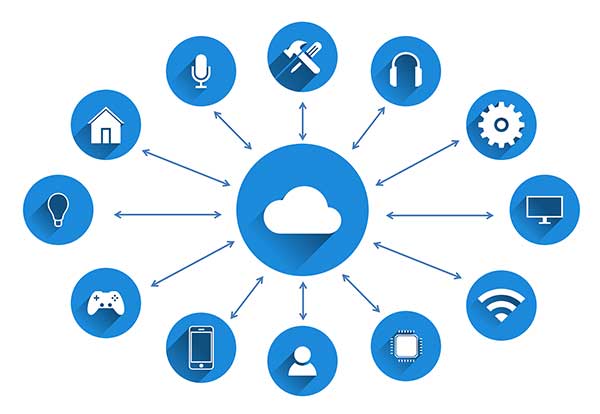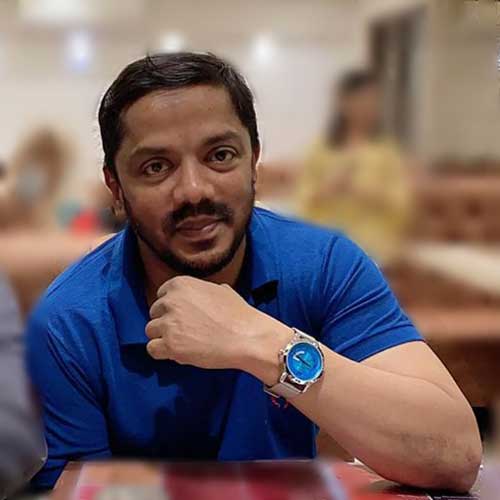Technology Enhancement from Smart to Intelligent!

In this article Abdul Waheed, Managing Director of EYTE Technologies Pvt. Ltd. talks about how technology has evolved over a period of the time and has been embraced by one and all. The article also elucidates on issues pertaining to security of technology, introduction of IOT and its applications and what the future looks like.
Lazy people are not considered as useful resources in any society, but they can be ideal to drive the direction of technology. They can find the best routes and shortcuts for any complex jobs given to them. This is what I believe can be used to create convenience of use in technology or what we call as user-friendly devices.
Manual tik-tok switches (don’t try to find this on Google Play) to push buttons and touch screens, are all examples of the way that we have explored to make things ‘easy to use’. Alexa, Hi Siri, or Hey Google may be the best commands that drive technology the easy way. Going forward technocrats are working on commands, which use the neuron signals of the brain. This means, you don’t even have to move your lips; for instance for a VC session you only need to provide the command in your brain and the screen drops down, the projector lift comes down, projector switches on, the drapes roll down, lighting creates the required mood and of course the AC will turn on. Doesn’t it sound like heaven?
Manufacturers are in fact finding it difficult to cope up with the fast pace, at which today’s technology is moving. The lifecycle of any product is reducing at very high speed. Many a times we service providers of technology are being asked by clients to design a system that can last for five to 10 years. Our reply to them is simple - how long have they used their last cellular phone, maximum two years? Then how can one expect more from equipment, which is much more complex than a mobile phone?
IOT, AI, Cloud, Data Analytics, ML, AR, VR are the common terminologies for people in the workspace technology domain. These technologies are the game changers of today’s world. Let me simplify for better understanding.
We are all well aware that Internet is the most widely used mode of communication in the world today. The social networking domain, be it WhatsApp, Tiktok, Insta, FB or Twitter is becoming increasingly popular and lazy (read ‘easy to use’). Even people in rural areas who might not have even seen classrooms or school buildings, not only know how to use the internet and social media but are also addicted to it. This is the world of internet today.
Similarly, todays smart equipment, be it the security camera in your office, or the thermostat of the air conditioner, or the occupancy sensors in the meeting room, everything is connected to the internet. They also talk to each other by providing their status to each other via cloud and cloud-based devices.
‘Cloud’, which was not easily available for access until a few years ago, is now easily accessible at reasonably affordable rates. Also, easily accessible are free platforms like Youtube, We-transfer, Google Drive etc.
Today these smart devices boast of an additional feature – intelligence. Intelligence that we, human beings always feel is the distinguishing factor between us and other creatures. Now this intelligence is being installed in Machines and robots too.
Artificial intelligence implanted in machines uses ML (Machine learning) language enabling them to be smart and intelligent like humans. To understand this, please look at your smart phones. Actually, they are not only smart (getting all your data and information with your permission by making you agree to terms and conditions while installing applications :) but are intelligent too.
When tilting a phone, it immediately changes the content into portrait or landscape mode using sensors. It intelligently changes the brightness - sensing the lux level or ambient light, it reads fingerprints and even eye retina. Smart phones know to click a selfie when you smile, it recognizes the faces and sorts your photo gallery, it has access to your routes and locations, knows your home and office destination and can automatically send notifications about traffic on your route at your office leaving routine time. This kind of intelligence can obviously also be very scary.
Google and others are collecting all this data since years enabling them to become leaders in Bigdata, and data analytics, which is among the essentials for any business in today’s world.
We cannot run away from this, and will have to adapt and embrace the technology.

Abdul Waheed is a dynamic AV industry leader and Managing Director at EYTE. EYTE Technologies Pvt Ltd. is one of the leading AV, IT, IOT AND Acoustic consultants in India. Abdul, A CTS holder from Avixa, has been part of the AV industry for more than two decades and has been contributing to technological development and assistance to many clients. EYTE has contributed and delivered many successful projects that includes MNCs, Hospitality, Government and Educational segments. He be reached at abdul@eyte.sg
Since a decade we have been talking about Smart Buildings, then we had the ‘Intelligent building’ concept and now the world is talking about ‘Living building’ concepts.
Smart buildings are those that have smart devices, which were dumb, meaning: the access card machine can help open doors but is not an IOT device and does not talk to other devices.
In Intelligent Buildings, the devices installed can talk to each other and provide data to the facility mangers dashboard, giving inputs about temperature in the room, enabling the FM to control temperature from his control panel on the screen. Projectors can provide critical data. For instance, they can send out information that lamp hours are burnt out in a particular room and can request for an engineer to install a new lamp in meeting room number 4 for example.
Living Buildings are a step ahead. The facility manager may just have to look for some other job, as all the above-mentioned functions will take place automatically without human intervention. It will not only have the smart devices installed, but all the devices can give their feedbacks to each other via cloud, and based on the feedback they themselves can take smart decision and actions.
If it was raining the previous night, the humidity sensors installed in the garden will send a signal to the the water pump that humidity level is such that the plants don’t need water today, thereby saving resources like water and energy.
If on a particular day you need to start your official activities at noon for any reason, you can leave a message on the office phone app on cloud that you would be needing meeting room #4 for an hour in the afternoon for meeting a vendor and post that you would need a quiet place to study the tender document. The intelligent building will take care of everything, from booking the room for your meeting for an hour, to lighting your seat. Before you even enter the room, the presentation display will turned on and ready for the meeting and your favorite cappuccino or drink will reach the table at the exact time entered in the cloud data. Not to forget, email will be sent automatically to your vendor and facility manager about the booking details. The way finder for outside visitors can also be sent to the vendor. This not only saves time, energy and cost, but also contributes to higher efficiency and productivity as normally 30% of employee’s time is wasted finding vacant space for meetings.
The sensors of Living Building can also read facial expressions and provide feedback to HR managers if an employee is seen in stressed conditions.
Technology is contributing to energy saving, cost reductions, higher productivity and wellness. It addresses many issues of the modern world, including traffic issues. Almost everybody is using Google maps. When you book an Ola or Uber etc., you don’t get two taxis waiting for you, because the moment a driver accepts the booking, the software’s intelligence stops other drivers from accepting the same booking, not only saving human time but also fuel and aiding in improving traffic situations.
The Fitbit on your wrist, talks to your body and the doctors connected to the data collected through cloud. This is another example of how technology is contributing to improving quality of life.
It not only sets vibrations alarm to make you aware of the phone calls (avoid noise pollution, keep your phone on vibrator mode but can wake you up gently from your sleep. It also monitors your pulse, heartbeat, and BP. It collects the data of your health and keeps your doctor updated of how many steps you are walking every day and if your BP is under control. God forbid if during sleep your pulse rate increases or your blood pressure shoots up beyond prescribed levels, it can vibrate at higher frequency in an attempt to wake you up and can even send an alarm to the doctor. Request for an ambulance can be sent out giving updated details of your condition and in this manner, technology can save lives. So, is technology a disruptor or a bane?
Above are examples of how AI, IOT, and cloud-based services are being used to Enhance Your Technological Experiences.